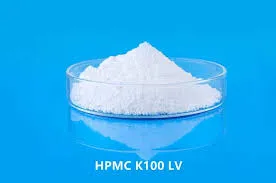
Dec . 04, 2024 10:22 Back to list
Enhancing Adhesion with Advanced Mortar Bonding Additives for Construction Applications
The Benefits of Mortar Bonding Additives in Construction
Mortar bonding additives have become an essential component in modern construction, particularly in masonry and concrete applications. These additives are specially formulated to enhance the bond strength between mortar and the substrates they are applied to, providing a significant improvement in durability and longevity. In this article, we will explore the key advantages of using mortar bonding additives, their technological innovations, and their applications in various construction projects.
Enhancing Bond Strength
One of the primary functions of mortar bonding additives is to significantly enhance the bond strength between mortar and other materials, such as brick, stone, and concrete. Traditional mortar can sometimes struggle to adhere properly due to various factors, including surface dust, moisture, or incompatible materials. By incorporating bonding additives, contractors can overcome these challenges. The additives work by improving adhesion, resulting in a more robust structure that can withstand environmental stresses and physical loads.
Resistance to Water and Weather
Mortar bonding additives also contribute to increased resistance against water intrusion and weathering. In many climates, moisture can penetrate through mortar joints, leading to damage such as cracking, spalling, and eventual structural failure. Additives designed to improve water resistance help create a more impermeable barrier, ensuring that moisture does not compromise the integrity of the bond over time. This feature is particularly valuable in regions that experience heavy rainfall or freeze-thaw cycles, where traditional mortar alone may be insufficient.
Improved Workability and Application
mortar bonding additive

In addition to enhancing bond strength and resistance, many mortar bonding additives improve the overall workability of the mortar mix. This includes factors such as better flow, easier mixing, and extended work time before setting. Improved workability translates to more efficient application by masons and contractors, as they can achieve smoother finishes and more precise placements of materials. It allows for greater flexibility on-site, enabling workers to complete tasks with less effort and reduced risk of errors.
Technological Advancements
Recent advancements in chemistry and material science have led to the development of innovative bonding additives that offer even greater benefits. For instance, polymer-modified additives have gained popularity due to their ability to significantly boost adhesion and flexibility while reducing the risk of cracking. These polymers create a film around the aggregates, enhancing the overall structure without compromising the traditional characteristics of mortar. Moreover, advancements in eco-friendly additives focus on reducing the environmental impact of construction processes, providing sustainable options for modern building projects.
Versatile Applications
Mortar bonding additives find applications across a wide range of construction and renovation projects. From residential homes to large commercial buildings, these additives are invaluable in applications such as bricklaying, tile setting, and repair work. They are particularly beneficial in situations involving historical restorations, where the preservation of structural integrity is paramount. By using bonding additives, contractors can ensure that repairs blend seamlessly with original materials, maintaining both strength and aesthetic appeal.
Conclusion
In conclusion, mortar bonding additives are an essential tool in the construction industry, offering numerous benefits that enhance the durability, workability, and performance of mortar applications. With the ongoing development of advanced materials and technologies, the future of bonding additives looks bright, promising even greater innovations that can address the evolving needs of construction professionals. For builders and contractors looking to improve the quality and lifespan of their projects, integrating mortar bonding additives is not just a choice — it’s a necessity for achieving optimal results.
-
Versatile Hpmc Uses in Different Industries
NewsJun.19,2025
-
Redispersible Powder's Role in Enhancing Durability of Construction Products
NewsJun.19,2025
-
Hydroxyethyl Cellulose Applications Driving Green Industrial Processes
NewsJun.19,2025
-
Exploring Different Redispersible Polymer Powder
NewsJun.19,2025
-
Choosing the Right Mortar Bonding Agent
NewsJun.19,2025
-
Applications and Significance of China Hpmc in Modern Industries
NewsJun.19,2025







